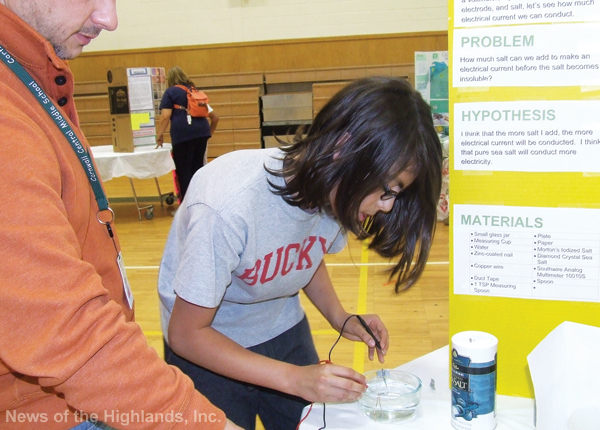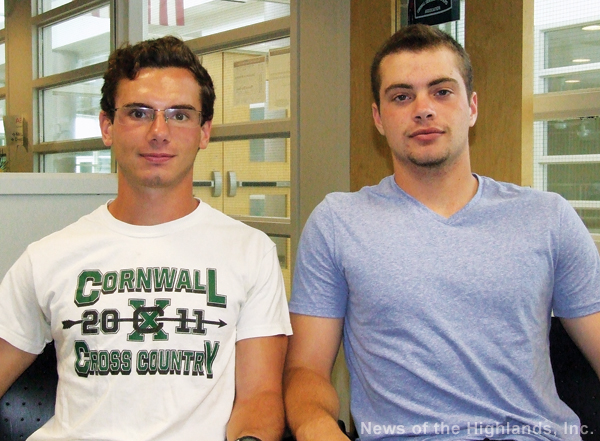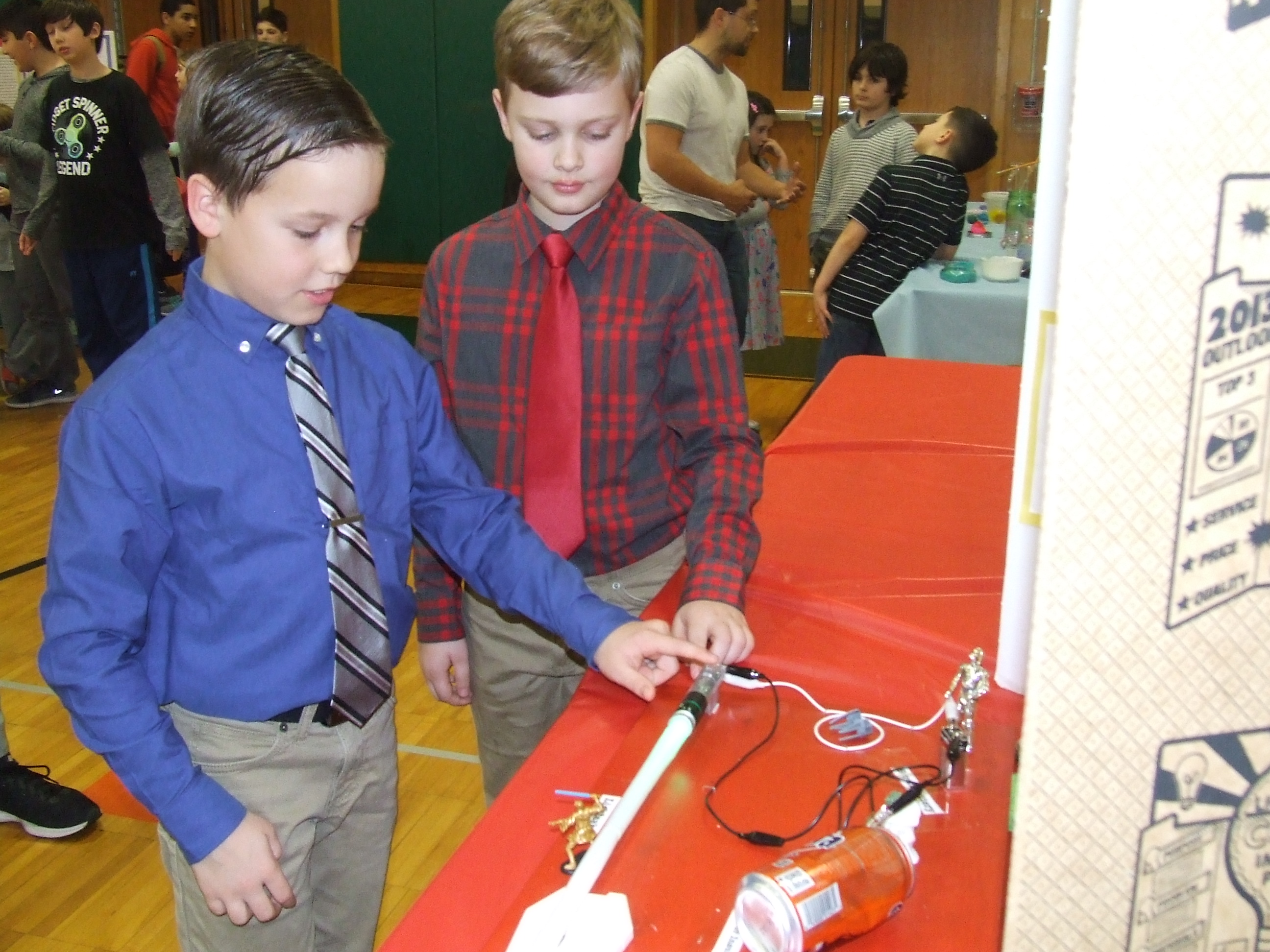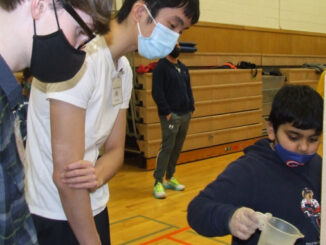
A light snow begins on a winter night. Before dawn the superintendent of schools calls for a two-hour delay. The message goes to your cell phone and to your alarm clock, which resets itself so you can sleep for another two hours.
It sounds like science fiction, but it’s not that far fetched. Aneeka Phadnis explained the concept at the Middle School Science Fair on April 29. The fifth-grader created an exhibit on the Internet of Things. The time is coming, she indicated, when machines will talk to one another. Maybe it’s happening now!
Middle school science fairs have changed in this century. And the current Internet (not the Internet of Things) is responsible. Kids used it for research and to print relevant photos. Caroline Hookey was one of several students to include a lap top in her demonstration. She used it to show a video of the Tacoma Narrows Bridge that collapsed on a windy day in 1940.
John Ward brought a laptop for a different purpose. He used the keyboard to manipulate a robotic hand that he created. A woman who watched him shook her head in amazement. “I have trouble just using my phone,” she admitted.
When asked why he chose his experiment, John explained it was a matter of economics. His original idea was to show a plane in vertical flight, but the thruster cost $1,000. That convinced him to try something else.
When we asked other students how they chose their exhibit, many of them said they went on line. Some “Googled” middle school experiments and then picked one that they liked.
Some administrators and faculty members attended the event and chatted with the exhibitors. Matt Keller, a sixth-grade teacher, got into a lengthy conversation with Turner Warren, who showed how different salts conduct electricity.
“Did you have fun?” was one of the first questions Mr. Keller asked. Later, Turner shared his belief that it might be possible to use sea salt to power a boat. Mr. Keller was impressed. He suggested that Turner read “20,000 Leagues Under the Sea.”
In the 1870 classic, Jules Verne uses an idea like Turner’s to describe the operation of a submarine. At the time, a submarine must have seemed as unbelievable as a cell phone talking to an alarm clock.



